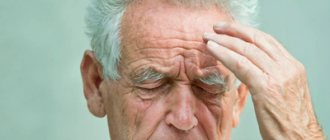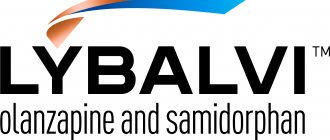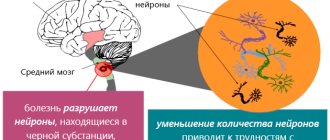The term "delirium" was first used in the 1st century AD. It denoted mental disorders accompanying fever or head injury [1]. Currently, delirium is considered a common syndrome accompanying somatic disorders, the core of which is attention disorders and cognitive dysfunction [2-4]. Impaired brain functioning in somatic or cerebral suffering is emphasized by such terms as “acute brain syndrome”, “acute cerebral insufficiency”, “toxic metabolic encephalopathy”, in addition, the term “acute state of confusion” is often used. Transnational and professional differences can be discerned in the designation of disorders of consciousness. In particular, English psychiatrists often call such conditions “confusional states,” American psychiatrists call them “acute brain syndrome,” and German psychiatrists call them “acute verwirrtheitzustaende.” In accordance with international classifications, the term “delirium” should be used to designate various somatogenic psychoses [5], however, domestic gerontopsychiatrists more often use the term “confusion” [3, 6].
The study of the epidemiology, clinical picture, and course of disorders of consciousness observed in neurological hospitals is extremely relevant, since the development of somatogenic delirium is accompanied by a decrease in everyday functioning, loss of functional independence, increased hospitalizations and an increase in hospital stay, and, ultimately, an increase in mortality [2 ]. Despite the high frequency, stupefaction syndromes often remain undiagnosed due to pronounced heterogeneity [2], which emphasizes the importance of studies devoted to clinical issues and differential diagnosis of somatogenic psychoses.
Recently, several large reviews have been published on the observation of delirium in somatic hospitals [7-12]. And although they all mention stroke as one of the main causes of somatogenic delirium, very few works are devoted to the clinical picture and differential diagnosis of psychoses after a stroke. The literature often describes isolated cases of schizophreniform post-stroke disorders [12-14]. But even major guidelines on the neuropsychiatry of stroke do not address the topic of post-stroke disorders of consciousness [15]. Apparently, this is due to the complexity of organizing research on delirium, which is a heterogeneous and fluctuating disorder, has multiple etiologies and requires an individual approach to diagnosis and therapy. In addition, for accurate classification of delirious conditions, it is necessary for the researcher to have a psychiatric education, who is not always on the staff of the neurological department.
Despite the lack of data on the psychiatric aspects of transient cognitive dysfunction, the prognostic value of post-stroke cognitive impairment is often investigated. Such works [16] do not consider cognitive dysfunction within the framework of any neuropsychiatric syndrome, which, despite the high significance of such studies, makes them incomplete.
Due to the fact that in the literature the authors found few works devoted to the clinical issues, pathogenesis and treatment of post-stroke delirium itself, we consider the diagnostic, pathogenetic and therapeutic aspects that have been developed and are used in general somatic practice and have already brought useful results [8, 17 ]. Despite the fact that in the genesis of post-stroke delirium there is, in addition to general and local brain damage, and it is generally accepted that the pathogenesis of somatogenic and post-stroke disorders of consciousness are largely similar, we believe that new approaches to the diagnosis, prevention and treatment of this condition can widely and successfully used in neurological hospitals.
Concept and types of delirium
The word “delirium” is Latin for “delirium” or madness.” The term was first used in Ancient Rome in the 1st century AD. Delirium is an acute, mostly reversible condition that affects attention, impairs perception, and reduces the level of consciousness. It is worth clearly distinguishing delirium from schizophrenia and bipolar disorder - these are fundamentally different things. An important difference is the treatability of delirium and the mandatory presence of a provoking factor in the anamnesis. The syndrome is a neurocognitive disorder and is considered a pressing medical problem. It is often encountered in medical practice and can lead to the death of a person.
Literature:
- Alcoholic delirium and delirious-oneiric psychoses of complex structure. K.G. Danielyan. / Yerevan: Hayastan, 1977. - 132 p.
- Emergency diagnosis and methods of relieving alcoholic delirium, withdrawal syndrome and convulsive paroxysms: Method. recommendations / Kharkiv. Research Institute of Neurology and Psychiatry; [N. I. Protasevich and others]. - Kharkov: B. i., 1988. - 13 p.
- Cognitive deficits in patients with alcoholic delirium. Berezkin A.S., Govorin N.V., Simbirtsev A.A. / Russian Psychiatric Journal 2021
Need some advice?
OR CALL A DOCTOR
CALL!
+7
Common types of disorder depending on the underlying cause
- Psychopharmacological.
Caused by taking drugs, mainly psychotropic drugs. Neuroleptics in combination with anticholinergics, antihistamines or beta-blockers can also lead to the condition - Organic.
Triggered by pathology of the nervous system, for example: malignant or benign formation in the brain, subarachnoid bleeding, abscess - Drug or alcohol.
Associated with alcohol (popularly called delirium tremens), opiates, barbiturates, hashish. Often occurs as a withdrawal syndrome - Infectious.
Occurs against the background of pneumonia, infectious brain damage, colds, systemic pathologies - Hormone.
Symptoms are usually associated with a thyroid disorder (hypothyroidism, hyperthyroidism) - Vascular.
Acute reaction to tachycardia or bradycardia, heart failure, anemia, shock conditions - Traumatic.
Due to brain injury - Geriatric.
Geriatrics are conditions characteristic of old people. Delirium of various etiologies is often detected in old age due to a slowdown in the body's metabolic processes - Postoperative.
It is often discovered after bypass surgery or surgical correction of valves. Prolonged stay on mechanical ventilation increases the likelihood of developing the condition.
There are other possible reasons: a sudden change in the environment, urinary retention, recent surgery. A deficiency of certain substances can also lead to aggression and delirium. Most often, this is caused by an insufficient amount of B vitamins. Sometimes a combination of reasons leads to the development of delirium: infection with pneumonia due to alcohol withdrawal, a combination of alcoholic beverages and medications, intoxication due to chronic heart pathologies.
Symptoms of the syndrome
To establish a diagnosis, the patient is admitted to a hospital for the purpose of a formal assessment of mental status. When making a diagnosis, three repetition tests are used. Testing and behavioral monitoring can help identify symptoms of delirium. These include:
- Manifestations of clouding of consciousness. Expressed in a violation of perception and cognition of the surrounding world. They suggest detachment from what is happening, incoherent judgment, meaningless speech, slow reactions, disorientation, complete or partial loss of memory.
- Hallucinations. The intensity of visual images that occur without external stimuli depends on the causes of delirium. The most vivid delusional pictures that distort real life are characteristic of withdrawal syndrome, delirium tremens, and hysteria. May manifest in different forms, depending on the patient; some see those same little green men, others see insects or strangers. Illusions on religious themes are not uncommon.
- Unusual motor activity. Manifested by excitement and reproduction of various actions. Sometimes the patient may think that he is at his workplace and perform characteristic movements.
- Inarticulate muttering (delirium delirium). Occurs in patients with infectious diseases, brain damage, and recovery after surgery. Accompanied by hand movements, speech contact is impossible. Sometimes it manifests itself in an abortive form - lasts less than a day and is not accompanied by disorientation.
- Tremor and tic. The anxiety state is aggravated, random movements gradually become constant and obsessive.
- Change in facial expressions. The mental state can be determined by increased emotionality, pantomime and a characteristic grotesque facial expression.
- Strange behavior. In patients, delirium can cause panic, uncontrollable anger, prolonged laughter, tears, sexual arousal, and screaming.
- Sleep disturbance. There are difficulties falling asleep, nightmares, and some fear of sleep.
The clinical picture depends on the etiology of the syndrome. Diagnosis of the condition can only be carried out by specialists. Often the manifestations are similar to those of other diseases, for example, dementia occurs in a similar way.
Delirious confusion
It develops most often - in approximately 37–45% of cases. Characteristic:
- disorientation in the environment;
- “shift” into the past, false recognition of former colleagues, deceased friends and relatives;
- failure to act in accordance with reality;
- deterioration of sleep: night sleep becomes shallow, and during the day the patient is in a constant doze;
- motor restlessness, fear and anxiety in the evening;
- delusions with persecution mania (most often occur at night).
This variant of delirium in the elderly is amenable to symptomatic psychotropic therapy. With the correct selection of medications, the ability to truly assess the surrounding world is restored, while the acute period is usually amnesic. However, symptoms of the pathology may return with exacerbation of concomitant diseases after surgery.
Treatment options for delirium
Treatment of delirium involves an integrated approach aimed at getting rid of the cause and stopping behavioral disorders. There are medical non-drug and pharmacological methods of therapy. Typical use:
- Non-drug methods. The group includes various psychotherapeutic techniques, cognitive stimulation, and verbal techniques. Communication with family and loved ones plays an important role. It is recommended to maintain a balance between stimulation and calming: it is advisable to reduce any stimulating actions to a minimum.
- Drug therapy is common. The classic scheme involves the use of antipsychotics, antidepressants, and sedatives. Combinations, dosages and prescriptions are related to etiology.
Some forms of delirium (pharmacological, alcoholic, drug) should be treated without drugs or with a limited number of drugs. Excess chemicals can worsen psychosis.
Principles of therapy
Treatment is carried out in two main areas. The priority is to identify and, if possible, treat the underlying cause of delirium in older people. In addition, mandatory symptomatic treatment of behavioral disorders is carried out:
- Normalization of sleep. Sedatives are prescribed with caution, if absolutely necessary in small doses. The doctor adjusts your diet and reviews the list of medications you are taking (many medications cause insomnia and/or daytime sleepiness).
- Elimination of psychotic disorders. Hallucinations and delusions characteristic of the pathology require the mandatory use of antipsychotics. Doctors prefer the latest generation of drugs, which are less likely to cause side effects. To avoid complications, antipsychotics are discontinued immediately after feeling normal.
- Sudden changes in mood and behavior, anxiety. They can be corrected with individually selected anxiolytics and antidepressants, and sometimes drugs from the group of benzodiazepines are used.
Additionally, they practice methods of training cognitive skills. When communicating, doctors adhere to clear and understandable verbal instructions, try to establish eye contact, and minimize sensory disturbances with the help of glasses or hearing aids.
All conditions have been created for the treatment and care of people suffering from senile delirium. These are comfortable rooms, polite medical staff who have extensive experience in working in such situations, qualified doctors who use modern and effective treatment methods. Call us at 8(969)060-93-93 . Don't delay contacting a specialist! The earlier therapy is started, the higher the likelihood of a favorable outcome!
Progression and consequences of untimely treatment
Delirium and the behavioral abnormalities it causes appear suddenly. The patient's age, health status, causes and nature of manifestations should be taken into account. The progression of symptoms such as restlessness, hallucinations, and anxiety depends on the nature of the syndrome. With alcoholic, psychopharmacological or drug delirium, the condition worsens rapidly. The patient exhibits cardiovascular system disorders, blood pressure fluctuations, and large-scale tremor. No less dangerous is rapidly developing delirium of an infectious nature. It is accompanied by fever, chills, and intoxication. Damage to the body by infection leads to the development of an inflammatory process, leading to improper functioning of organs and systems.
Older people are more likely to experience slow progression of delirium. This leads to the development of complications, increased cost of treatment, and profound impairment of cognitive function. There is a risk of incomplete physical recovery and some memories never return. In the next two years, death is more likely. However, if you consult a doctor in a timely manner, the prognosis is mostly favorable. The lack of competent therapy can lead to rapid deterioration of conditions, complications or even death.
Stationary
The first aid for delirium is 24-hour hospitalization. In Moscow and other Russian cities, doctors are successfully fighting the condition and its consequences. Recovery is mainly achieved through a combination of medication and psychotherapy. The following stages are expected:
- Detecting causes and prescribing appropriate therapy;
- Minimizing the amount of medications taken;
- Detoxification is carried out if necessary;
- Creating a favorable and calm environment;
- Relieving disorientation in space, time and society;
- Drawing up a recovery plan for the body.
Before starting therapy, it is necessary to diagnose the brain using X-rays. The method of magnetic resonance or computed tomography allows identifying a condition of traumatic, organic etiology, as well as vascular, the treatment of which is important to begin immediately. Additionally, it is necessary to conduct a general blood and urine test. Laboratory tests make it possible to assess the patient’s condition, detect intoxication, inflammation, and symptoms of renal failure. The department of the hospital that treats delirium becomes specialized for the main diagnosis: narcology, gastroenterology, urology, nephrology.
Securing the patient should be strictly avoided. This leads to aggravation of the stage, the patient suffers and becomes nervous. Limb binding is used only in cases of life-threatening situations (suicide attempt) or during periods of aggression.
Diagnostics
Specialist doctors make a diagnosis based on observing the patient over a period of time and assessing changes in the level of consciousness and the severity of cognitive impairment. They use questionnaire tests compiled in accordance with international standards, which allow you to determine how oriented the patient is in time, reality, whether there are impairments in short-term memory, ability to concentrate, etc.
But since a person with a similar diagnosis cannot provide reliable information, the doctor talks with relatives. Diagnosis of concomitant pathologies is of great importance.
Methods for correcting behavioral deviations due to the syndrome
- Timely changes in diet (refusal of foods that cause drowsiness or alertness), discontinuation of psychostimulant drugs. Creating a favorable and calm atmosphere. Refusal of medications that can be avoided at this stage. In case of persistent sleep disturbance, take sedative medications.
- Illusions, delusions, auditory and visual hallucinations. Symptoms require the use of antipsychotics (aloperidol, chlorpromazine, clozapine)
- Increased emotionality in delirium. Psychotherapy usually helps. If the patient has become depressed, then it is permissible to use mood stabilizers or antidepressants.
- Excessive excitement. Recovery is facilitated by the presence of loved ones. Fixation of the limbs leads to aggravation of the condition. Possible use of sedatives or antipsychotics
- Confusion. In most cases, setting reference signals helps. For example, a clock, a calendar, familiar objects. The patient is forced to count, characterize shapes, name the days of the week
- Anxiety. Benzodiazepines are used. If the course of the disease is complicated by psychotic disorders, then antipsychotics are recommended.
The acute stage of delirium lasts about 2 weeks. Improvement is evidenced by sound, healthy sleep. The patient often treats the incident as a nightmare or does not remember anything.
Undifferentiated psychosis
Occurs in a third of patients. Accompanied by visual hallucinations and delusional statements. At the same time, the picture of this form of delirium in the elderly is dominated by delusions of material damage, jealousy, and, somewhat less frequently, by delusions of persecution. People from the immediate environment (medical personnel, family members), and chaotic memories are “included” in the imaginary picture. Insomnia is also typical.
The prognosis is favorable. In most cases, patients respond well to the treatment and completely recover from the delirious state.
Dangers of self-medication for delirium
Not all patients with delirium tremens or other types of delirium rush to seek help. On the Internet you can find a lot of advice on how to get rid of the signs of the condition: detachment, loss of orientation, chaotic movements, hallucinations. Self-medication using an algorithm from a random site can negatively affect health or life in the following ways:
- It is difficult or impossible to establish the causes without a specialist. The course of delirium can differ significantly from the description: sometimes a number of signs are completely absent. Even with severe symptoms, diagnostic procedures are required.
- Sometimes psychosis develops rapidly. The condition is characterized by a high rate of progression. Delay may result in lost functions not being restored or causing death. Psychosis accompanied by a suicide attempt is not uncommon.
- Only by receiving professional help can you cope with the disorder. As a result of improper therapy, manifestations become intense and irreversible. If treated correctly, restoration of activity takes at least 6 months after the condition has resolved.
- The symptoms of delirium are similar to other diseases. Sometimes behind the appearance of a sign there are other dangerous pathologies.
- Delirium can accompany life-threatening conditions. Detection of the process is often associated with myocardial infarction, stroke, hypoglycemia, and poisoning.
- Psychosis is fraught for others. Alcoholic delirium is considered the most dangerous. When it is repeated, patients show hatred towards others and are even capable of murder.
Considering all the dangers of self-medication, the main thing is to immediately seek medical help.
Classification
The following types of alcoholic psychoses are distinguished:
- Alcoholic delirium (typical, abortive, excruciating, lucid, atypical: systematized, with transient oneiroid , with verbal pseudohallucinosis, mental automatisms). Characterized by an acute course.
- Alcoholic hallucinosis (verbal hallucinosis, hallucinosis with sensory delirium/mental automatisms). It has an acute, protracted and chronic course.
- Alcoholic delusional psychoses with acute, prolonged and chronic course (alcoholic delusions of jealousy/alcoholic paranoid).
- Alcoholic encephalopathies (acute/chronic encephalopathy , alcoholic pseudoparalysis , Gaye-Wernicke encephalopathy ).
Outpatient
The second part of the therapy can be done at home. Recovery takes place under the supervision of a specialist. Therapy includes:
- A calm atmosphere and establishing contact with others. At home, the patient should be given attention, not disturb him unnecessarily and not cause negative emotions. It is important not to raise your intonation or provoke conflict. Initially, the patient may experience frequent mood swings, aggression, and tearfulness. Occasionally, a distortion of reality is recorded.
- Elimination of factors that provoke the condition. The drug that causes psychosis should be immediately removed from the patient’s field of vision. If the cause was delirium tremens, you should give up any alcoholic beverages and undergo coding. If a factor cannot be excluded (for example, a systemic disease), then it is worth minimizing its consequences by continuing therapy as indicated.
- Psychotherapy. To restore the ability to think and soberly assess the situation, as well as to track dynamics, it is recommended to continue psychotherapy. Group and individual lessons help.
- Healthy lifestyle. Lifestyle also plays a certain role. It is especially important to give up smoking, drugs, alcohol and monitor your sleep patterns. To some extent, normalization of nutrition has a beneficial effect.
Many experts talk about the beneficial effects of reflexology, massage, and swimming. With timely treatment, proper treatment and compliance with recommendations, complete remission is usually observed.
List of sources
- Shumsky N.G. Alcohol (metalcohol) psychoses // Guide to psychiatry / Ed. A.S. Tiganova: In 2 volumes - M.: Medicine, 1999. - T. 2. - P. 304-338.
- Gofman A.G., Meliksetyan A.S., Orlova M.A. Alcoholic psychoses: clinical picture, classification // Social and clinical psychiatry. 2010. T. 20, No. 1. P. 5-12.
- Altshuler V.B. Alcoholism / V.B. Altshuler. – M.: GEOTAR-Media, 2010. – 264 p.
- Altshuler V. B. Clinical manifestations and patterns of the course of alcoholism / V. B. Altshuler // Questions of Narcology. – 2013. – No. 3. – P. 112-142.
- Antipova, L. A. Clinic of alcoholism complicated by delirium (comparative study): abstract. dis. ... Ph.D. / L. A. Antipova. – M., 2008. – 20 p.
Prevention
It is not always possible to prevent the development of delirium due to various causes. To prevent the development of the condition, it is necessary to eliminate negative factors in a timely manner.
What causes delirium symptoms and what should be avoided if possible for prevention:
Predisposing
- Elderly age. Geriatric delirium, which is difficult to treat, is most common in people over 60-65 years of age
- Dementia of varying degrees
- Male age
- The presence of some (several) chronic pathologies. The prerequisite may be diseases of the endocrine system, urinary system, heart and blood vessels
Provoking
- Acute damage to internal blood vessels and heart, lungs, kidneys
- Violation of water-electrolyte metabolism
- Bed rest, insufficient movement for a long time
- Constipation, urinary retention
- Infection
- Installation of catheters, stomas, stimulators
- Dangerous drugs and substances that cause delirium
You should take with caution: antihistamines, antibiotics, antipsychotics, drugs with lithium, opiates, chloral hydrate, sedatives, drugs against Parkinson's disease, barbiturates, anticonvulsants, benzodiazepines
For patients with alcohol and drug addiction, prevention will include giving up bad habits. Solving the problem on your own is not easy; it is better to seek the help of professional narcologists. The greatest positive effect is provided by treatment in specialized clinics. They allow not only to overcome addiction, but also to socialize in society.
General information
Delirium is the most common alcoholic psychosis. The first attack appears 7-10 years after the start of systematic alcohol consumption. In most cases, fever occurs in persons suffering from alcoholism of the second and third degrees. Under certain circumstances, delirium can develop in men and women without alcohol dependence. Symptoms of the pathology develop after the patient’s abrupt refusal to drink alcohol-containing liquids (voluntary or forced).
conclusions
Delirium is an acute condition with sudden development, having a different etiology. It causes persistent changes in consciousness, major disruptions in vital activity and is life threatening. Patients are not aware of their actions; such mental disorders can traumatize others. The effectiveness of delirium treatment is based on the emergency adoption of somatic measures, minimizing pharmacological therapy, and creating a trusting atmosphere. Only specialists can provide first aid, carry out separate measures, and guarantee recovery. It is strictly forbidden to fight psychosis on your own or not take any measures.











